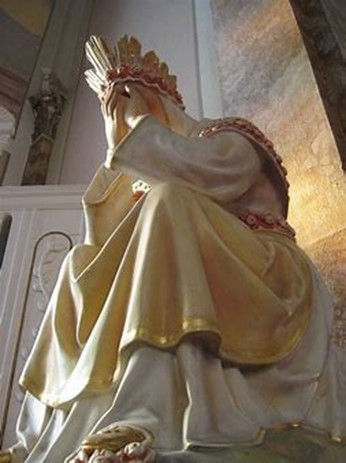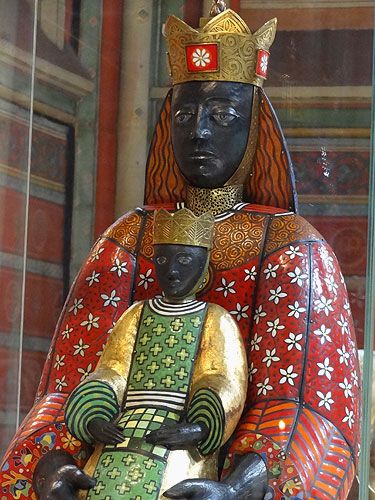
Our Lady of La Salette is called the true mother of sorrows.
‘The tears she sheds is for us and she will never abandon her children’.
The folk lore story talks of two children while shepherding their sheep saw a brilliant light, brighter than the sun.
As they approached, they noticed a “Beautiful Lady” seated on a rock and crying, with her face in her hands.
In tears, she stood and spoke to them in their local French dialect.
Our Lady of La Salette, La Salette-Fallavaux, France
Source: Wikimedia Commons
She wore a head-dress and a transparent crown, a dress with beams of light, and slippers edged with roses.
Around her neck hung a golden crucifix: on one end of the cross beam was a hammer and nails, and on the other, a pincher.
She said to them “Come to me, my children, do not be afraid, I am here to tell you something of the most importance.”
In La Salette, France, it is believed that the tears she sheds were not for herself, but for us, her children.

Introducing Notre Dame de Pleine Lumiere, Our Lady in Full Light, located in St Etienne Cathedral, Limoges, Frnace – a very new Black Madonna created in 2009 by enameller Lea Shams and sculpture Alain Duhan.
The cathedral is of gothic origin, has brilliant stained-glass windows and an amazing coloured pillar. It also features many gargoyles.
She is 1.17 meters high making her the largest Black Madonna in the world to date.
Source: Pinterest
Limoges was founded in 10BCE under the Roman name Augustoritum and soon became an important Gallo- Roman city. This is also where the Gauls people, called Lemovices, had their capital, and like many other towns, when taken over by Rome over time, the name evolved to Limoges.
Archaeology has shown that this city/town included an amphitheatre and a theatre, a forum with bath houses, and a temple dedicated to Venus, Diana, Minerva, and Jupiter – all located near the modern-day cathedral.
In 1239, the Dominicans also known as the black Friars built a convent near the city. Their chapel is now where of the Church of St Mary is today.
During the Middle Ages, Limoges became an important city/town with an effective industry for making enamels and these were exported all over the known-world of the time.
At some point enamel started to wane as a commodity and as luck would have it in 1765 CE an innovation in the form of Kaolin was discovered and the now very famous industry of Limoges porcelain began.